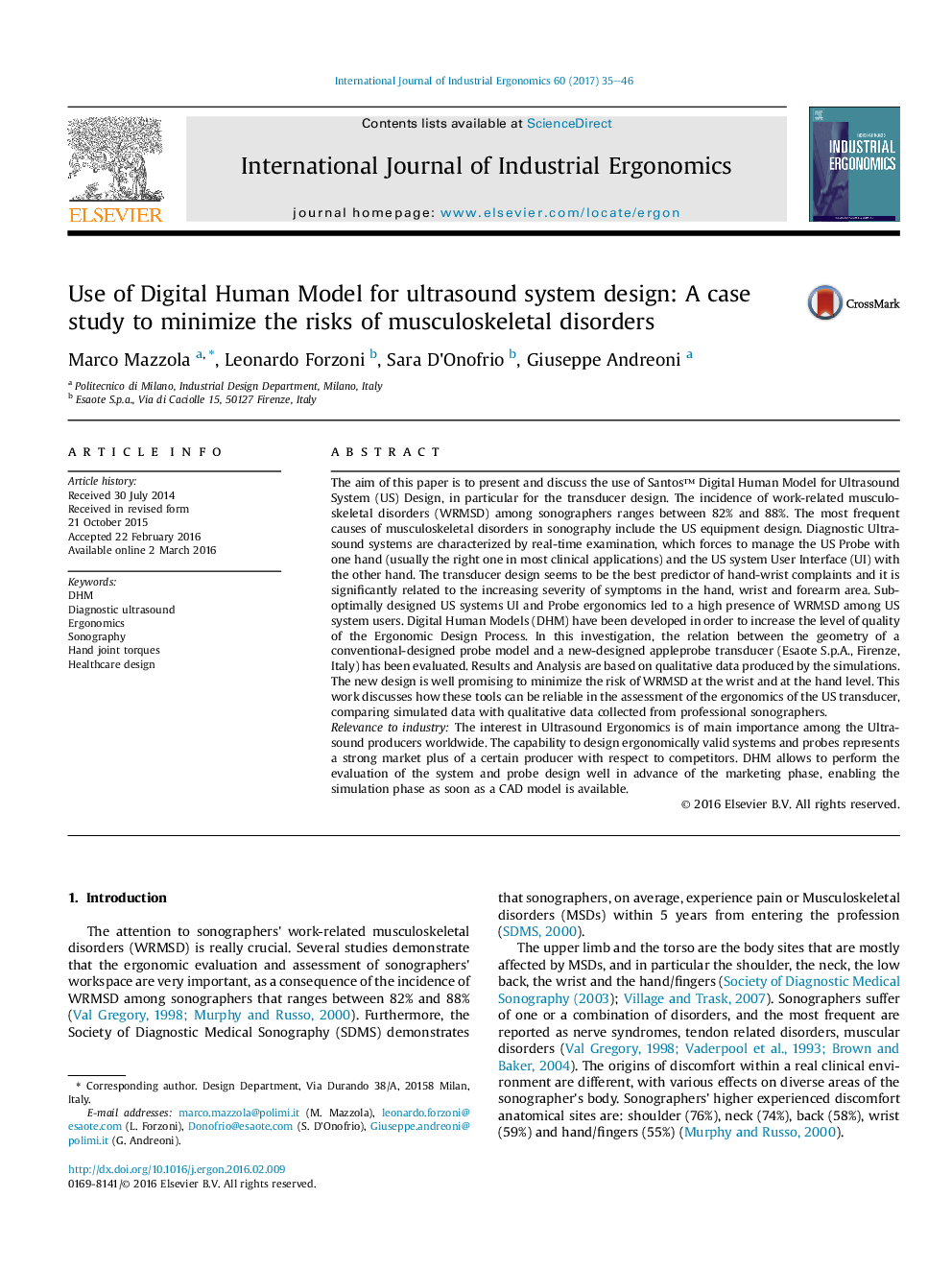| کد مقاله | کد نشریه | سال انتشار | مقاله انگلیسی | نسخه تمام متن |
|---|---|---|---|---|
| 5123682 | 1487415 | 2017 | 12 صفحه PDF | دانلود رایگان |
- An innovative use of DHM for Ultrasound System Design is proposed.
- We propose the ergonomics assessment of a new designed US transducer.
- We discuss how the use of the new US transducer can impact on the risk of WRMSDs.
- The benefits of the study are endorsed through an Industrial application.
- The proposes study is the first example in US System Design field.
The aim of this paper is to present and discuss the use of Santos⢠Digital Human Model for Ultrasound System (US) Design, in particular for the transducer design. The incidence of work-related musculoskeletal disorders (WRMSD) among sonographers ranges between 82% and 88%. The most frequent causes of musculoskeletal disorders in sonography include the US equipment design. Diagnostic Ultrasound systems are characterized by real-time examination, which forces to manage the US Probe with one hand (usually the right one in most clinical applications) and the US system User Interface (UI) with the other hand. The transducer design seems to be the best predictor of hand-wrist complaints and it is significantly related to the increasing severity of symptoms in the hand, wrist and forearm area. Sub-optimally designed US systems UI and Probe ergonomics led to a high presence of WRMSD among US system users. Digital Human Models (DHM) have been developed in order to increase the level of quality of the Ergonomic Design Process. In this investigation, the relation between the geometry of a conventional-designed probe model and a new-designed appleprobe transducer (Esaote S.p.A., Firenze, Italy) has been evaluated. Results and Analysis are based on qualitative data produced by the simulations. The new design is well promising to minimize the risk of WRMSD at the wrist and at the hand level. This work discusses how these tools can be reliable in the assessment of the ergonomics of the US transducer, comparing simulated data with qualitative data collected from professional sonographers.Relevance to industryThe interest in Ultrasound Ergonomics is of main importance among the Ultrasound producers worldwide. The capability to design ergonomically valid systems and probes represents a strong market plus of a certain producer with respect to competitors. DHM allows to perform the evaluation of the system and probe design well in advance of the marketing phase, enabling the simulation phase as soon as a CAD model is available.
Journal: International Journal of Industrial Ergonomics - Volume 60, July 2017, Pages 35-46
